July 16, 2021
Air Date: July 16, 2021
FULL SHOW
SEGMENTS

Obama’s Failure to Regulate PFAS
/ Aynsley O'NeillView the page for this story
Physicians for Social Responsibility recently used the Freedom of Information Act to obtain decade-old EPA documents showing during the Obama Administration the agency approved PFAS-related chemicals hazardous to human health for use in hydraulic fracturing despite warnings from its own scientists and calls for further testing. Living on Earth’s Aynsley O’Neill has the story. (05:36)

Hormone Disrupting PFAS Chemicals in Makeup
View the page for this story
A recent study found PFAS “forever chemicals” dangerous to human health in many beauty products tested, with long-lasting and waterproof lipsticks and mascaras containing some of the highest levels. Ami Zota, a professor of environmental and occupational health at George Washington University, joins Host Steve Curwood to discuss PFAS health risks, environmental justice and more. (08:55)
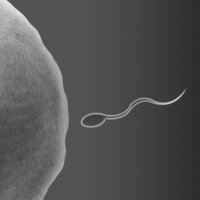
The Troubling Decline in Fertility
View the page for this story
Over the past four decades, sperm counts in many countries have dropped by more than 50%, and female fertility is also declining. Chemicals known as hormone disruptors are key culprits including PFAS and phthalates found in plastics. Shanna Swan, professor of Environmental Medicine and public health at Mount Sinai School of Medicine, led this groundbreaking research and is the author of the 2021 book, "Countdown: How Our Modern World is Threatening Sperm Counts, Altering Male and Female Reproductive Development and Imperiling the Future of the Human Race". Dr. Swan joins Host Steve Curwood to discuss the growing fertility crisis and why it hits vulnerable communities especially hard. (16:11)

Beyond the Headlines
/ Peter DykstraView the page for this story
Allergies in our warming world are nothing to sneeze at, Peter Dykstra of Environmental Health News tells Host Steve Curwood in this week’s Beyond the Headlines segment. Also, a glimmer of justice for slain indigenous environmentalist Berta Cáceres, and in the history calendar, a look back almost 200 years to a landmark animal cruelty law in Britain. (03:59)

Winning A Fight Against Thin Plastic Bags
View the page for this story
Worried about the environmental degradation caused by increasing plastic pollution in Malawi, Gloria Majiga-Kamoto organized a grassroots movement to fight the plastic industry and to support a national ban on thin single-use plastic. As a result of her dedicated campaigning, in July 2019 Malawi’s High Court upheld the ban on the production, importation, distribution, and use of thin plastics. Living on Earth's Bobby Bascomb spoke with Gloria Majiga-Kamoto, who has been recognized with a 2021 Goldman Environmental Prize. (11:18)
Show Credits and Funders
Show Transcript
HOSTS: Steve Curwood
GUESTS: Gloria Majiga-Kamoto, Shanna Swan, Ami Zota
REPORTERS: Peter Dykstra, Aynsley O’Neill
[THEME]
CURWOOD: From PRX – this is Living On Earth.
[THEME]
CURWOOD: I’m Steve Curwood.
Despite warning signs, toxic chemicals linked to the emerging fertility crisis were approved for fracking by the Obama Administration.
GOTTLIEB: They knew that these chemicals were extremely dangerous, and that the chemicals that they were looking at specifically could break down into PFAS. And they identified some of the specific health risks and then went on and approved the chemicals.
CURWOOD: Chemicals like PFAS and phthalates can disrupt the hormone system and reproduction.
SWAN: We did a whole series of studies showing that when a mother had higher levels of those phthalates in her urine the sons were born with genital changes and then we showed that the changes in adults were related to sperm count.
CURWOOD: That and more this week on Living on Earth – Stick Around!
[NEWSBREAK MUSIC: Boards Of Canada “Zoetrope” from “In A Beautiful Place Out In The Country” (Warp Records 2000)]
Obama’s Failure to Regulate PFAS

Recently released documents show that the 2011 Environmental Protection Agency approved three chemicals for their use in fracking, despite concerns that they would break down into toxic PFAS chemicals. (Photo: Department of Energy and Climate Change, Flickr, CC BY-ND 2.0)
[THEME]
CURWOOD: From PRX and the Jennifer and Ted Stanley Studios at the University of Massachusetts Boston, this is Living on Earth. I’m Steve Curwood.
In today’s broadcast you are going to hear about a massive threat to human and other animal life on earth that few people are talking about yet. The fertility crisis. You may have noticed China recently announced couples can now have as many as three children, after having already reversed its one child policy to allow two. One reason is sharply declining fertility rates in China. In fact fertility rates are dropping in many parts of the world, including the United States where the sperm counts of men are now half of what they were in 1970. And some women in their twenties are now seeing declines in the vitality of their eggs that used to be common for women in their thirties. Researchers say numerous synthetic chemicals that can disrupt the hormone systems involved in human and animal reproduction are to blame. Declining fertility is already contributing to the extinction crisis among wildlife, likely on a bigger scale than the already observed effects of DDT on the eggs of many bird species including bald eagles. Of course, much of the decline in global human population that is now projected to occur by the end of the century can be attributed to the increased education of women and growing acceptance of birth control practices. And fewer people consuming the earth’s finite resources could have environmental benefits. But much of the chemical basis linked to growing infertility is beyond the reach of individual human choice and control. For example, PFAS chemicals can contaminate food and water. Not only can they wreak havoc with hormone systems they are also linked to metabolic disorders and cancers. And despite their dangers to public health and fertility, back in 2011 the Obama Administration approved the use of PFAS chemicals in fracking wells for oil and gas. Living on Earth’s Aynsley O’Neill has more.
O’NEILL: Physicians for Social Responsibility recently used the Freedom of Information Act to obtain and make public a series of decade-old internal documents from the Environmental Protection Agency. The records obtained by the nonprofit group show that the EPA was concerned that three chemicals used in fracking would break down into toxic PFAS, but they approved these chemicals anyway. EPA officials had even recommended additional testing, but these tests were not mandatory and none of the documents indicated that the tests were actually carried out. PFAS are a class of chemicals linked to a multitude of health problems, not just infertility, but cancers, birth defects, and suppressed immune systems to name a few. Some call them “forever chemicals” due to how they don’t readily break down in the body or in our environment. This means that people who live near fracking wells and are typically exposed to PFAS through contaminated groundwater may continue to bear the chemical body burden, even if they leave the area. We spoke with Barbara Gottlieb, Environment & Health Program Director for Physicians for Social Responsibility.

Barbara Gottlieb is the Environment and Health Program Director for Physicians for Social Responsibility. (Photo: Courtesy of Physicians for Social Responsibility)
GOTTLIEB: It really was disappointing that the Environmental Protection Agency decided to approve chemicals for use in oil and drilling, knowing what they knew. Because even back in 2011, that was 10 years ago, they knew that these chemicals were extremely dangerous, and that the chemicals that they were looking at specifically could break down into PFAS. And they identified some of the specific health risks and then went on and approved the chemicals. I hope that approach is a thing of a past.
O’NEILL: To address these issues, Barbara and other experts say that action is needed on a massive scale.
GOTTLIEB: We'd like more public disclosure in terms of what chemicals are being used in fracking and drilling. We'd like the EPA and the state not to allow PFAS to be manufactured, imported, or used in oil and gas drilling and fracking.
O’NEILL: But fracking wells are not the only danger zones where PFAS chemicals can be released into the environment. The Environmental Working Group, another nonprofit, recently updated their estimate of industrial sites in the United States that are known or suspected of using PFAS. In 2020, around 2500 facilities were known PFAS dischargers, having already been listed on the EPA’s Toxic Release Inventory, but additional government reports and new analysis has now bumped that estimate up to nearly 30,000. Here’s Scott Faber, EWG’s Senior Vice President of Government Affairs:
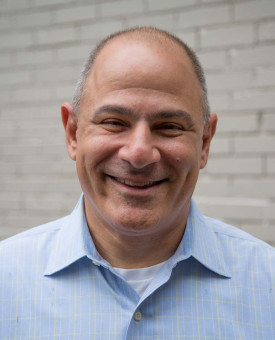
Scott Faber is the Senior Vice President of Environmental Working Group’s government affairs efforts. (Photo: Courtesy of Environmental Working Group)
FABER: This is a pretty good estimate of how many thousands and thousands of manufacturers of all sorts of different products are just dumping PFAS into our water supplies, whether it's straight into rivers or into the groundwater or sending it through the pipes to our wastewater treatment plants.
O’NEILL: The EPA did not respond to our requests for comment, but they stated to the New York Times that the Biden administration has made “addressing PFAS a top priority”. And Scott Faber at EWG says that President Biden’s American Jobs Plan…
FABER: … proposes to spend $10 billion to get PFAS out of our drinking water. And the President has pledged to designate PFOA and PFOS as hazardous substances under our national cleanup laws. And to quickly set a national drinking water standard and to use the powers of the federal government to reduce our exposure to PFAS through everyday products.
O’NEILL: And the recent revelations about PFAS only add to the pressures on the Biden administration to move the country away from fracking permanently. For Living on Earth, I’m Aynsley O’Neill.
Related links:
- Physicians for Social Responsibility | “Physicians Group Uncovers Evidence That ‘Forever Chemicals’ (PFAS) Have Been Used Extensively in Fracking Unbeknownst to Public”
- Environmental Working Group | “Twelvefold Increase in Suspected Industrial Dischargers of ‘Forever Chemicals’”
- BBC | "Fertility rate: 'Jaw-dropping' global crash in children being born"
Hormone Disrupting PFAS Chemicals in Makeup

PFAS chemicals help lend water resistance to mascara and other beauty products but have been linked with numerous health problems including infertility. (Photo: Carlos Martinez on Unsplash)
[MUSIC: The Temptations “Beauty Is Only Skin Deep” Single, Motown Records]
CURWOOD: Sure, beauty may only be skin deep but new research finds that numerous cosmetics contain PFAS “forever chemicals” that can travel deep inside our bodies and linger. Long-lasting lipstick and mascara may be applied for only a day, but the PFAS they contain may boost the lifetime risk of cancer and infertility. And researchers at the University of Notre Dame have also found PFAS in other makeup including foundations, concealers, and eyeshadow. Ami Zota is a professor of environmental and occupational health at George Washington University. She was not directly involved in the Notre Dame study but joins us now from Washington DC to give us some insights. Welcome to Living on Earth, professor!
ZOTA: Thank you for having me. I'm a big fan of the show so it's an honor to be a guest.
CURWOOD: So what are the health impacts that have been linked to these chemicals?
ZOTA: Yes, this is an active area of research. For example, my lab is currently doing research on the effects of PFAS in pregnant women, so on pregnancy complications, as well as cardiovascular disease risk later in life. So a very active area of research. What we do know from a combination of both experimental animal studies, as well as epidemiologic studies, so those are ones conducted in humans over many years, that PFAS can affect many different systems in our bodies.
CURWOOD: What kind of health effects are you talking about?
ZOTA: So in newborns and young children, which is one particularly vulnerable group, we see lower birth weight, delayed mammary gland development, and even reduced response to vaccines. In adults, there is a consistency in the data with respect to thyroid disease, increased cholesterol levels, liver damage, kidney cancer and testicular cancer. But you know, the science is not able to catch up to how quickly new chemicals are being produced. So really, we've only kind of really studied well, a handful, maybe like five to seven PFAS. And here we have, you know, four to 8000 of them circulating in the environment.

Lipsticks, especially ones advertised as long-lasting, can contain high levels of PFAS, the study found. PFAS chemicals are known to interfere with hormone systems. (Photo: Daria Gordova on Unsplash)
CURWOOD: So this recent study from the University of Notre Dame found PFAS chemicals in more than half of 231 cosmetics they tested. How did they actually test how much PFAS is in these products?
ZOTA: Sure, they used a two-prong approach, which I thought was smart in terms of just getting a lot of information and trying to do it in a cost-effective manner. So first, they screened over 200 products for fluorine count. So they were looking at the total fluorine in chemicals. And so they were kind of leveraging the fact that the fluorine compound is central to all PFAS. And they were really looking for that fluorine detection. And then what they did was they took 29 products that had total high fluorine concentrations, and they used kind of more precise methods that are well accepted in the analytical chemistry space to measure more precise concentrations of a range of PFAS in those 29 products.
CURWOOD: Now, I have to confess something here. I don't do much in the way of television anymore, but I used to do a lot of television. And in that game, there's a lot of makeup, they would put a foundation on me, they would put something to cover up my various spots. They even put stuff around my eyes. I didn't get much in the way of lipstick. 'Course now I do radio I don't do so much in the way of cosmetics. But there are a lot of people in this country who are putting this stuff on their faces every day, largely women, right? What is the public health risk, do you think, to this stuff?

Research shows that for many people the main source of exposure to PFAS “forever chemicals” is drinking water. (Photo: LuAnn Hunt on Unsplash)
ZOTA: Those are good questions. So my research has examined the impact of other chemicals in cosmetics, like phthalates and parabens, on health effects. And we do know that those exposures can be substantial, because we're talking about chronic everyday use, right? And it's often these chemicals are sitting on your face for hours, they can be absorbed. We know from human studies that still for the majority of people, the main kind of route of exposure to PFAS is drinking water and diet. Our studies that use survey information and other, you know, drinking water concentrations and other methods have mostly shown that the communities with the highest exposures, it's often because they have contaminated drinking water sources. But I think that this study opens the door and the need to really examine the role of cosmetic use in PFAS risk, especially certain vulnerable populations.
CURWOOD: Ami, to what extent is this an environmental justice issue?
ZOTA: Many people wear cosmetics, right? But women of color, often, well they spend more on cosmetics, and they tend to use more toxic cosmetics. If you think about the workplace, women of color are often minorities, especially in professional workplaces. And so there are a lot of norms about how they have to appear. There's a lot of workplaces, corporate workplaces and even the military until a few years ago, that didn't allow black women to wear their hair naturally. And I think for many women, there is a pressure to show up with your hair very well done, and with a face with a lot of makeup. So my group has spent a lot of time kind of reframing the problem of chemicals in cosmetics through an environmental justice lens. And we do that because we want to highlight the role of racism and colorism, you know, the powerful role these systems of oppression have in shaping beauty norms, and everyday beauty practices.

Professor Zota encourages re-examining the narrow, colorist beauty standards that require women of color to use toxic chemicals to straighten their hair or put on a full face in order to fit in at the workplace. (Photo: Etty Fidele on Unsplash)
CURWOOD: Now, PFAS chemicals are used, in part because they can make these beauty products last longer and more water resistant. But what are some alternatives for people who are concerned about this? What are some products that have little or no PFAS, that nonetheless are long lasting and can get somebody through the day?
ZOTA: I don't think the answer will be the same for everybody. I think that many of the safer alternatives are more expensive. And so that really points to access and unequal access, and a lot of the safer products not being accessible to lower income communities, often communities of color. There are some resources, like the Environmental Working Group Skin Deep, the Detox Me app by Silent Spring Institute. And Clearya also has a database that is gaining more traction, that does provide some useful information. But you know, there are some shortcomings as well, right? Because EWG develops their ratings based on what's in the ingredients. But what we learned from this study is that in the majority of the cases, the products with high PFAS didn't necessarily have PFAS listed on the label. These databases are only going to be as good as the information we have, right? And so sometimes it's about maybe not getting the long lasting lipstick, or the 24 hour, the 12 hour mascara. Maybe, you know, maybe that's you know, a possibility. There's also safer silicones that can be used in certain products like foundations. But ultimately, individual actions will only take us so far, we need more systems wide interventions to this problem.

Ami Zota is an Associate Professor in the Department of Environmental & Occupational Health at the George Washington University Milken School of Public Health. (Photo: Courtesy of Ami Zota)
CURWOOD: Professor, from your perspective, what kind of policies do you think are needed now to protect people from exposure to PFAS chemicals?
ZOTA: So there is a bill right now, to ban PFAS from cosmetics. I think that's a good step in the right direction. This bill would ban the entire class of PFAS, especially focusing on limiting the intentional use of PFAS in cosmetics. But it's also important that Congress give FDA greater authority to ensure that all cosmetics do not contain any toxic chemicals. And you know, I think the other thing that we need to highlight in this conversation is that the US EPA has also failed the public by allowing thousands of PFAS to be manufactured with virtually no regulation.
CURWOOD: Ami Zota is a professor of environmental health at George Washington University. Professor, thanks so much for taking the time with us today.
ZOTA: Thank you so much for having me.
Related links:
- The Washington Post | “Senate Bill Would Ban Toxic ‘Forever Chemicals’ in Makeup, Which New Study Found Are Often Unlabeled”
- Find the study on PFAS in cosmetics here
- The Environmental Working Group’s Skin Deep® database
- About Ami Zota
- Check out the Agents of Change in Environmental Justice podcast, founded by Ami Zota
[MUSIC: The Temptations “Beauty Is Only Skin Deep” Single, Motown Records]
CURWOOD: Coming up – More on the fertility crisis from a leading expert with some advice on how to protect ourselves. Keep listening on Living on Earth.
ANNOUNCER: Support for Living on Earth comes from Sailors for the Sea and Oceana. Helping boaters race clean, sail green and protect the seas they love. More information at sailors for the sea dot org.
[CUTAWAY MUSIC: Michael Hedges, “The Funky Avocado” on Live On the Double Planet, by Michael Hedges, Windham Hill Records]
The Troubling Decline in Fertility
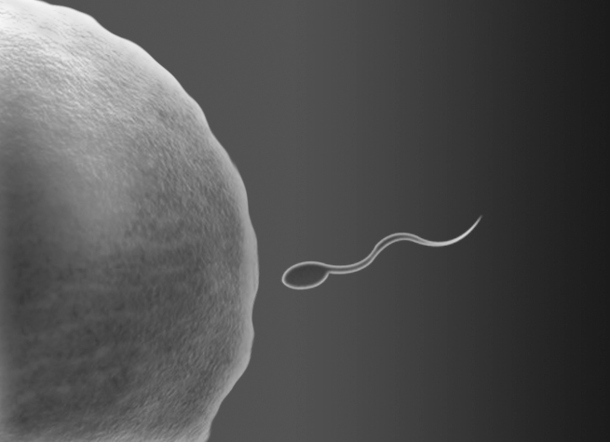
Fertility worldwide has dropped nearly 1% per year from 1960 to 2018. Endocrine disrupting chemicals like PFAS and phthalates play a role in fertility decline by affecting male testosterone, diminishing sperm count, decreasing sperm quality, and increasing erectile dysfunction. (Photo: Zappys Technology Solutions, Flickr, CC BY 2.0)
CURWOOD: It’s Living on Earth, I’m Steve Curwood.
Before the break we talked about PFAS chemicals and their threat to human health. Now we turn to another group of chemicals, phthalates, which are a common ingredient in plastic made from fossil fuels and many other products including flooring and non-stick cookware. Like PFAS phthalates can mimic or interfere with hormone systems, and research is linking them to the decline in male fertility, including lower sperm counts and poor quality. Female fertility is also declining. Women today have a harder time conceiving than previous generations. The notion of polluting ourselves into a fertility crisis is exactly the premise of Margret Atwood’s novel, The Handmaid’s Tale. Made into a tv series, The Handmaid’s Tale is about a dystopian world in which the very few fertile women left are forced to bear children for the ruling class of a religious totalitarian government.
AUNT LYDIA: Fertility is a gift directly from God. He left you intact for a biblical purpose. Like Bina served Rachel. You girls will serve the leaders of the faithful and their barren wives. You will bear children for them. Oh, you are so lucky!
Shanna Swan is a professor of Environmental Medicine and public health at Mount Sinai School of Medicine and author of the book Countdown: How Our Modern World is Threatening Sperm Counts, Altering Male and Female Reproductive Development and Imperiling the Future of the Human Race. And she joins me now. Welcome back to Living on Earth Dr. Swan.
SWAN: Thank you, Steve, really happy to be here and talk to you again.
CURWOOD: So let's talk first about the behavioural part about this. What are things that we do to reduce our sperm counts in terms of our diet and habits?
SWAN: Well, some of them are pretty obvious. They're things that we worry about for our heart health and overall health, like smoking. So smoking is very strongly related to sperm count. And what people might not know is that the mother smoking and even the father smoking at the time he conceives the pregnancy can affect the semen quality in the son that was being conceived at that time. So smoking is the big actor. Extreme alcohol, binge drinking is really bad for sperm count. And then diet matters, as do the organic nature of the fruits and vegetables that you're eating. So we showed that when people ate organic fruits and vegetables, the men's sperm count increased. But when the fruits and vegetables were not organic, we didn't see that. Stress is important, the stress of daily life, we found that the number of life events that a man has in his daily life affects his sperm count. And so pretty much everything in our lives that we experience plays a role in our health, and particularly in sperm count.
CURWOOD: And what about the chemicals? What is that doing? What's the relationship between chemicals in this more than 50% decline in the sperm count in the last 40 years?
SWAN: We know something about several classes of chemicals, but we know much less than we should. So I've studied the role of pesticides. So pesticides we've shown are directly related to the sperm count, morphology and motility of sperm. And we showed that in a study where men in rural Missouri, where there's a lot of pesticides had only half as many moving sperm as men in Minneapolis, where there's very low pesticide use. And within that Missouri men, the amount of pesticide in their urine was directly related to their semen quality. So that was a pretty clear picture. We've also seen that phthalates, which are everyday chemicals in our daily lives, make plastic soft and flexible in our personal care products, and so on, that those chemicals, which can lower testosterone, are very important for male reproductive development, particularly when the male is in utero. And we did a whole series of studies showing that when the mother had higher levels of those phthalates in her urine, the sons were born with genital changes, which add up to them being less completely masculinized. And then we showed that those changes in adults were related to sperm count. So we made a link from in utero exposure to adult sperm function. But there are other classes of chemicals that matter, the bisphenols, the Pfoas, and so on. And we are just attacking those because each investigation takes millions of dollars and 10, 15 years. So it's a slow process and this should be cleared up before the chemicals go into the marketplace.

Exposure to endocrine disrupting chemicals during pregnancy can influence the baby’s reproductive system especially during early pregnancy and affect subsequent generations. These toxic chemicals are present in everything from skin care products to food and drinking water. (Photo: Muhirehussein12, Wikimedia Commons, CC BY-SA 4.0)
CURWOOD: Now, let's talk a little bit more about women. You write that women are now less fertile at a young age than their grandmothers once they hit 35. So that means that just within these last couple of generations, two or three generations, the fertility of women has fallen dramatically. What do you think are the main issues women are experiencing when they're trying to have a baby aside from of course, the issue of the quality of semen of sperm that they might be getting for this process?
SWAN: Right? Well, I think the first thing we have to consider and acknowledge is the role of age. So women's fertility and the number of eggs she has available, and the number of good eggs she has available, drops off rapidly once she passes about 30 to 34 years of age. And because couples are choosing for economic and other reasons to delay their first child, this pushing women into this area, this age range in which they're going to have more problems, they're going to have more miscarriage. That said, what the thing you quoted from our book, which is that women in their 20s have less fertility than their grandmothers did in their 30s. That is also going on and that's saying that even young women are having problems and that's not an aging problem. And I wanted to point out that a mother's exposure affects her offsprings reproductive health and inside that fetus are the germ cells that will produce the next generations children. But the point here is that if we are protecting ourselves, particularly if we're pregnant or for men who are about to conceive a pregnancy, they would be protecting at least three generations. So we have a big responsibility. The good news Steve, which I learned only recently, from Pat Hunt at the University of Washington, she showed that an animal's in the laboratory, you can take a male who's been exposed and has severe reproductive problems, his offspring and his offsprings offspring. If there are kept clean, kept unexposed to these chemicals, in three generations, they can recover their reproductive health. And that's kind of encouraging. Because these chemicals are not persistent most of them the ones we're exposed to today. Some like the PFAS are more persistent, but we're not looking at the old DDT and dioxin and PCBs of which were banned a long time ago, those very long life chemicals. But phthalates and phenols leave the body in four to six hours. So if we can stop them from coming in, we can clean up our mess.
CURWOOD: Part of the response to the fertility decline and perhaps might be fair to say even we're looking at a fertility crisis, although it seems silent at the moment, is that some folks will use reproductive tech, I'm thinking of in vitro fertilization for one. But you know the cost of that is then five figures, you're talking 10,000 $20,000, perhaps more, and repeat that a few times that becomes a piece of change, or hiring a surrogate to have one's child. So in other words not everyone can afford that this sounds to me, like a case also of environmental injustice, that reproductive rights for poor and underserved communities are affected by the inability to use this technology.

The first trimester of pregnancy is crucial for the reproductive development of the male fetus. Exposure to androgen chemicals can result in a shortening of the anogenital distance (AGD) which can in turn result in a smaller penis and a lower sperm count in adulthood. (Photo: Evan Amos, Wikimedia Commons, Public Domain)
SWAN: That is correct and I wanted to also add that disadvantaged communities we're seeing are actually more affected by these chemicals. I'll give you an example. We have a study in four cities in the United States. One of those studies is Rochester (New York). In Rochester, the Study Center is mostly Medicare, mostly African American, and they are having higher exposures we're seeing and the effect of those exposures, even at the same level are greater than in the other three centers, which are primarily middle class, primarily white, and have lower exposures. So again, three ways in which this is an unjust impact, greater exposure to disadvantaged communities, greater impact of a given exposure, and less opportunity to buy your way out of it, whether it's through assisted reproduction or safer foods, or safer personal care products.
CURWOOD: So what can people do? In light of this knowledge? What can people do to lessen their exposure, for example, to endocrine disruptive chemicals that might affect their ability to reproduce?
SWAN: So that's an important question. And it's something that we spend several chapters on in Countdown,our book, this is quite a big story. But I'll try to say a few things that people could do. So first of all I want to preface this by saying the things that people can do may be limited by their economic status. So food access, ability to afford organic foods, ability to afford personal care products that are cleaner and safer. Even having the time to go to the web to look up these products assumes a certain amount of free time and an economic status and an education that not everybody has. So there is an environmental justice issue connected to this question of what can people do and I want to stress that. Okay, so what can people do? Well I recommend that people to the extent they can eat unprocessed food and that's because the processing of food, once it's collected at maybe even an organic farm will introduce chemicals like phthalates and the bisphenols into the food. And we know that because we know that when food goes through plastic tubing, which is soft, it picks up the phthalates from the tubing, enters the food, gets into us, gets into your urine, the CDC can measure it and that's been shown in many settings including for babies in the NICU. So unprocessed food that doesn't go through plastic, isn't packaged in plastic isn't shipped in plastic and certainly is not heated and plastic will be much safer for you. Another thing you can do is try to worry about the things that your home that I like to think of as barriers. So a nonstick pan has a coating on it a Teflon pan has a coating on it right? To keep the food from sticking. That is an endocrine disrupting chemical it's one of the PFAS chemicals. The barriers on our clothing that keep off liquids or rain that's a barrier that isn't that same class of chemicals. Barriers on paper to prevent oil from leaking through, like in a pizza box that will have those chemicals. Then you might ask about the things in our home that are flame retardant. So flame retardant clothing, flame retardant cushions, flame retardant you know, upholstery of various kinds. These are endocrine disrupting chemicals. So basically, I think we have to have a lens that we put on everything we bring into our bodies and into our lives and use that lens to ask what is in it, or what could be in it, try to read labels try to look up information on the web. It's a hard job. And I should say that the consumer should not have to do this. It's not really what we're good at is it? We expect the government to protect us to keep us safe. But they are not doing that as far as these chemicals are concerned.
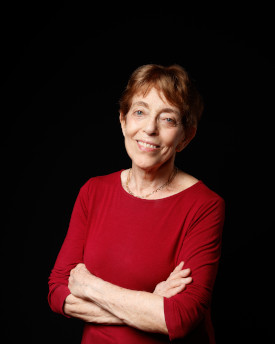
Dr. Shanna Swan is one of the world's leading environmental reproductive epidemiologists and a professor of environmental medicine and public health at the Icahn School of Medicine at Mount Sinai in New York City. An award-winning scientist, her work examines the impact of environmental exposures, including chemicals such as phthalates and Bisphenol A, on men’s and women’s reproductive health and the neurodevelopment of children. (Photo: Alex Dupeux)
CURWOOD: So, you know, around 30 years ago when scientists began sounding the alarm about climate disruption, saying that our activity as humans was dangerously altering the environment people, a lot of people were in denial. And it became an issue between believers in climate change and non believers. And we've been talking about the effects of chemicals that they have on our reproductive health for a long time, as well, without a lot of response from society frankly, up until this point. What relationship in your view is there between climate change and reproductive health?
SWAN: Well, first of all, the analogy you're making, I think, is a really good one, or it's one that I make myself. I see the same story with this sperm decline and fertility decline. It was touted in 1992, originally, that's quite a while ago, getting close to 30 years. And when it first came out, it was not listened to, it was denied. And now with the book, and our tying this all together and identifying environmental causes, and their own experience of infertility in themselves, or in their friends or in their families, they're seeing wow, this is something that we have to pay attention to, we have to do something about this. So but more directly Steve, the tie in between environmental endocrine disruptors, and fossil fuels is very direct, because many of these, if not most of these chemicals are made from fossil fuel byproducts. And in fact, the predictions are that as the use of fossil fuels for driving our cars and heating our homes is going to go down, which is a great thing, there's going to be an increase in the number of plastics on the market, which will make use of those resources which could go anymore into heating our homes and driving our cars.
CURWOOD: You know we're not the only creatures on the planet, right? So what effect Do you think the decline in fertility we're seeing in our species is reflective of what might be going on with animals and insects?
SWAN: I believe that the same chemicals that affect us affect all creatures on the planet, at least those that are responsive to hormone regulation of reproduction. And there was recently a study that showed that dogs, people's pet dogs are affected by the chemicals in their homes and the fertility of those dogs was affected. We see wildlife the effects on alligators and frogs and fish and birds. And there's no end to it. Whenever scientists look for declining species, they can identify these chemicals in the bodies of these animals. And by the way, these endocrine disrupting chemicals are found everywhere. It's not just in busy cities, it's not just in industrialized areas. They are found at the bottom of the Marianas Trench, and they're found at the Arctic Circle. There's no limit to where these go and so there's no limit to the animals that are affected. So we're all in this together.
CURWOOD: Shanna Swan's book is called Countdown: How our Modern World is Threatening Sperm Counts, Altering Male and Female Reproductive Development and Imperiling the Future of the Human Race. Dr. Swan, thanks so much for taking the time with us today.
SWAN: It's been a pleasure talking to you. Thank you, Steve.
Related links:
- Learn more about Dr. Shanna Swan
- The Guardian | “Most Couples May Have to Use Assisted Reproduction by 2045”
- Scientific American | “Reproductive Problems in Both Men and Women are Rising at an Alarming Rate”
- ALJAZEERA | “Despite Three Child Policy Many in China Can’t Afford More Kids”
[MUSIC: Jorma Kaukonen, “Izze’s Lullaby” on River of Time, by Jorma Kaukonen, Red House Records]
CURWOOD: To get the stories behind the stories on Living on Earth as well as special updates please sign up for the Living on Earth newsletter. Every week you’ll find out about upcoming events and get a look at show highlights, and exclusive content. Just navigate to the Living on Earth website loe.org and click on the newsletter link at the top of the page. That’s loe.org
[MUSIC: Jorma Kaukonen, “Izze’s Lullaby” on River of Time, by Jorma Kaukonen, Red House Records]
CURWOOD: Coming up – Plastics are not only problems for health they can also degrade the environment. How a woman in Malawi worked to get a national ban on single use plastic bags. Later in the program here on Living on Earth.
ANNOUNCER: Funding for Living on Earth comes from you, our listeners, and United Technologies, combining passion for science with engineering to create solutions designed for sustainability in aerospace, building industries, and food refrigeration.
[CUTAWAY MUSIC: Louis Armstrong, “Mahogany Hall Stomp” on Complete 1930 – 1947 RCA-Victor Studio Sessions, by D. Hutchinson, Definitive Records]
Beyond the Headlines

Allergies in our warming world are nothing to sneeze at. (Photo: Pixel Rich on Unsplash)
CURWOOD: It's Living on Earth, I'm Steve Curwood.
And it's time now for a look beyond the headlines with Peter Dykstra. Peter's an editor with Environmental Health News, that's EHN.org, and DailyClimate.org. He's on the line now from Atlanta, Georgia. How you doing, Peter? How do you like the summer heat?
DYKSTRA: Oh, summer's okay. It's currently thunder storming here in beautiful Atlanta. But there's an element of the heat and drought and potential wildfire season, all the things that are besetting the western US right now. It turns out that in the desert, this all makes for a terrible allergy season.
CURWOOD: Whoa, whoa, whoa, allergies are related to the drought and all this climate disruption? How so?
DYKSTRA: Yeah, when you have a virtually snow-free winter, very little rain, extraordinary heat and everything else, people who suffer from allergies, like me, have a really hard time because pollen stays in the air; we're talking about grass pollen, pine tree pollen, possibly even ragweed from last fall, staying in the air forever. And the desert can be an absolutely hellacious place for people with allergies, like me.
CURWOOD: Okay, well, so something else to think about with the climate that, you may not have water, you may have to deal with fires, you may get storm surges, and you may be sneezing a lot. Okay, Peter, hey, what else do you have for us?
DYKSTRA: Something we've touched on a lot in the last five or six years, the murders of activists in developing nations who were trying to protect the environment, the most famous of whom was Berta Cáceres, she won the Goldman prize back in 2015 for her work opposing a hydro dam project in her native Honduras. A year later, she was murdered. Eventually, there were seven people arrested and convicted for the murder. But just in the last few weeks, Roberto David Castillo -- former Honduran Army Intelligence Officer, trained in the US and also head of the hydro company that was building the dam -- was found guilty as a co-collaborator in ordering the murder of Berta Cáceres. And if you're into justice and into protecting some very, very brave people, this is good news.
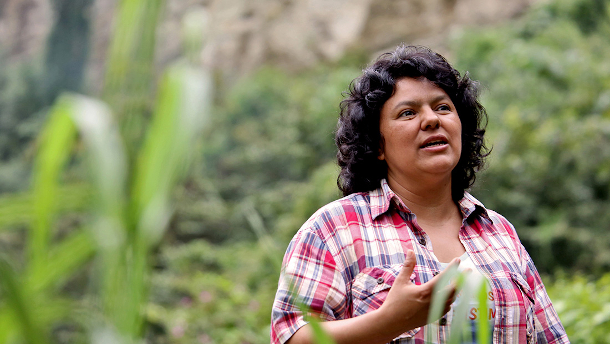
The murder of Berta Cáceres drew global attention to the rampant killings of environmental activists and land defenders. At least 212 were slain in 2019, according to Global Witness. (Photo: Goldman Environmental Prize)
CURWOOD: Of course, now, people can be convicted, but what kind of sentence? I mean, is this guy just gonna do a little community service and walk, or what's happening?
DYKSTRA: We'll find that out in early August when he is sentenced. The maximum sentence ranges between 24 to 30 years.
CURWOOD: Okay, Peter, hey, let's take a look back in history now and tell me what you're looking and seeing.
DYKSTRA: July 22nd, 1822, when many of your listeners were not alive. It was one of the first laws governing the treatment of animals. The British Parliament passed what was called Martin's Law.

In 1822, the British Parliament passed Martin’s Act, which prohibited cruel treatment of cows, horses, oxen, mules, and sheep. (Photo: Library of Congress, public domain)
CURWOOD: And I gather this era was also one of reform, what else did they move forward in terms of taking care of the ecology and such?
DYKSTRA: Well, thanks to famous Britons like the poet Wordsworth and the scientist Michael Faraday, they actually were early hell-raisers about environmental conditions in London, from coal burning; choking, sometimes lethal pollution; and also the smell of the Thames River. There were early attempts to regulate both air and water pollution. Those laws didn't get far; the river was still dirty, the air was still dirty and sometimes lethal. But Britain took some of the first steps to fix some of the worst problems.
CURWOOD: Hey, Peter, thanks so much for taking the time with us today. Peter Dykstra is an editor with Environmental Health News, that's EHN.org and DailyClimate.org. We'll talk to you again real soon.
DYKSTRA: All right, Steve, thanks a lot. Talk to you soon.
CURWOOD: And there's more on these stories on the Living on Earth web page. That's LOE.org.
Related links:
- The Salt Lake Tribune | “Another side effect of Utah’s drought: A terrible allergy season”
- The Guardian | “Berta Cáceres assassination: ex-head of dam company found guilty”
- Listen to LOE’s coverage of the murder of Berta Cáceres and other environmental activists
- About Martin’s Act, the “Cruel Treatment of Cattle Act 1822”
[MUSIC: Etienne de Lavaulx, “An English Country Garden” commercially unavailable]
CURWOOD: Your comments on our program are always welcome. Call our listener line anytime at 617-287-4121.That's 617-287-4121. Our e-mail address is comments@loe.org. Comments@loe.org. And visit our web page at www.loe.org. That's loe.org.
[MUSIC: Etienne de Lavaulx, “An English Country Garden” commercially unavailable]
Winning A Fight Against Thin Plastic Bags

Malawi’s commercial city of Blantyre. (Photo: Goldman Environmental Prize)
CURWOOD: As Peter Dykstra noted in the case of Goldman Prize winner Berta Caceres, advocating for environmental protection can be deadly. Fortunately for our next guest, there was a much happier outcome. Gloria Majiga-Kamoto, from Malawi has won the 2021 Goldman Prize for Africa for leading and winning the fight to get single use plastic bags banned in her country. Gloria Majiga-Kamoto spoke with Living on Earth’s Bobby Bascomb.
BASCOMB: Gloria, can you please first describe for us the plastic problem in Malawi? Paint a picture for us.
MAJIGA: So it's quite bleak. Our landholding size is very small, and we are quickly filling up the country with plastic. We're also agriculture based in our economy. So now agriculture is competing with plastics, because the place where we should be producing our food has now become a home for these plastics that are discarded. They're called little blue plastics the single use plastics, so you can see them pretty much everywhere. And they're also said to have become the new national flower, because you can find them on trees, and just pretty much everywhere.
BASCOMB: Yeah, yeah, I've spent quite a bit of time in Southern Africa. And I've seen that these, you know, huge fields, just so full of small plastic bags, it looks like that's what's growing there. Like instead of leaves, you have these plastic bags that you get in all the shops for some tiny little product you bought.
MAJIGA: Yeah, that's exactly what it looks like. And I mean, it can be quite frustrating to see it. Because as you just come into any area where there's economic activity, you increasingly see plastic waste, just around those areas. So as we're also developing our trade centers, as an economy, it's becoming an increasingly huge problem, even in areas such as the rural areas where you'd not expect this to be a problem.
BASCOMB: Well, to what extent is the plastic harming the economy and harming the ability of farmers to grow their products safely.
MAJIGA: So I really like to share this story, there was one farmer in particular that we worked with who received a goat from what we call the Pass on Project. So they would receive the gold and then expect that, you know, they could use the dung to produce organic manure and therefore help them to increase their productivity. But because most of these plastics are thrown in the field, we had a case where one of these goats ingested a piece of plastic and so she lost that goat. And that meant that she was basically not going to realize the benefits as had been intended by this program, because of just this one piece of plastic that ended up in the goats belly. And so I think for me, it sort of just gave me perspective to say that, you know, it really seems simple when you throw a piece of plastic away, but then it could actually alter somebody's livelihood.
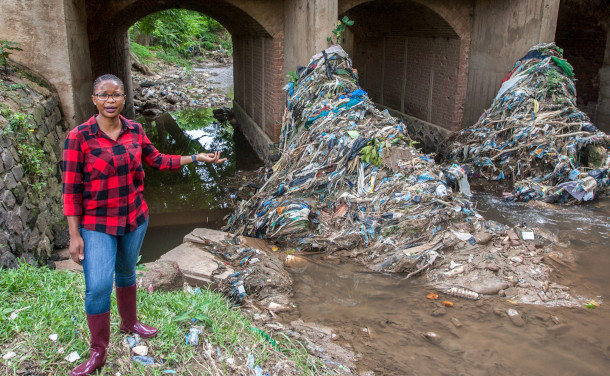
2021 Goldman Environmental Prize winner Gloria Majiga-Kamoto stands in front of the Mudi River bridge where plastic bags and other waste products are often trapped. (Photo: Goldman Environmental Prize)
BASCOMB: You know, if you look at a map of Malawi, roughly a quarter or a fifth or so of the country is Lake Malawi. And of course, rivers will flow into the lake. It's an important feature of the geography and the economy, the lake. What effects are you seeing on Lake Malawi from all this plastic?
MAJIGA: So there's definitely been a lot of pollution. There's a lot of plastics in the lake and as it degrades into these little pieces, the fish tend to consume it. And we don't know what the impact of that is because we all consume chambo, we all have this fish. But there's really no research yet to know what the long term impacts are on human health. And we've also seen water levels going down simply because within the communities a lot of the waste that's thrown into the rivers, it also disrupts the flow of the rivers, which means that the contributory rivers are decreasing in terms of the water flow. And they're also then leading to this decrease in the water levels for the lake. There's not a lot that's being done about it so far. And even these communities don't understand the full impact of plastic within the communities.
BASCOMB: Well, how did you present this problem to communities to get their support for banning single use plastic?
MAJIGA: The first and most important thing I think, is to help people to see the human aspect because I think it's very hard to appreciate that you're actually altering somebody's life. So I mean, even if you just think about fishermen, the moment you inform them that listen, this is how much more you could be catching but half the time you pull out your nets, most of it is plastic, that's you losing some livelihoods that you could have gotten if you could catch a little bit more. So I think making it really relatable for them to understand how they are part of the problem, because it's not just somebody else who threw that waste away. We're all part of that problem. We've all been participating in one way or the other. Putting those stories together that also really helped us to then demonstrate to policymakers and decision makers that something needs to be done. And it's an urgent situation, because the longer we take, the more dire the impacts become.
BASCOMB: Well, the government of Malawi did try to deal with the single use plastic starting in 2015. Can you tell us about the early stages of that effort?
MAJIGA: So a lot of it started from when we were reviewing the Environmental Management Act. And when we advocated for the development of a single use plastics ban, that was one of the things that we had in mind. But as you know, it's been a long road. There was a lot of defiance from the companies, obviously for their own economic interests. And so one of the things that they said was, well, we provide jobs to 35,000 Malawians, which was really frustrating because you're thinking that you're putting 17 million people on the line because you're providing jobs for 35,000 people. It hardly makes sense. It's not even, you know, comparative, it's completely ridiculous. There's been a lot of political interference along this journey. So which is why we came in, because we saw the need for someone to really put a voice out there to say that we are watching, and we're expecting this to go through because we believe that, you know, we cannot put our environment at risk because of some economic gains. So we went on, and we joined the case as friends of the courts. But we also organized quite a number of marches to the courts just to persuade governments as well as the courts to expedite the hearings, because it was very time sensitive for us. The longer we waited, the more plastics we're putting out into the environment.

Plastic bags and other waste trapped at a bridge in the Mudi river in Blantyre, Malawi. (Photo: Goldman Environmental Prize)
BASCOMB: You organized a huge protest in 2018 to petition the government to act on single use plastics, but just a day before the protest was set to start, the courts actually held the ban, and the protest turned into a celebration. Can you tell us about that?
MAJIGA: So this was really crazy, because I'm not a huge fan of demonstrations. And one of my key strengths is harmony. So I prefer to sit down and have a conversation and make something out of it. So it was really fun when we say you know what, I think we've tried to talk this over, we have tried to show them all the different impacts so we're going to go there right to the court, and then say we want this case to be a priority. So we did organize the march, and we sent out the letters to have the march go on, and then receive the communication that oh, you guys don't need to come to the court, you just have to change your route, because already going to have the case hearing in the judge's chambers, so you don't need to come. But we said well, it's fine we'll still march and will still pass by the courts. So that was a really different approach for us and it was really exciting. And the march was so much fun it was a celebration. And to see all these people coming together, we had a lot of schoolchildren who also joined in, we had people coming out of their offices and just putting up banners and just saying we stand with you and we definitely want to kick out plastics. It was incredible and I think it shows just how much people are interested in fighting plastics in the country.
BASCOMB: Well, congratulations, that must have felt really, really great for you.
MAJIGA: It was. It was definitely incredible.
BASCOMB: So what happened after that? What kind of changes are you seeing in Malawi now, after the courts held the ban on plastic?
MAJIGA: I think one of the biggest changes that I have enjoyed watching is to see young people take so much initiative to come up with different solutions. So we've seen different enterprises coming up where young people are trying to recycle upcycle plastics. But also we've seen a lot more young people taking a front row in advocating about this and just trying to raise awareness and help people and communities understand. We've also seen government take more action, we've seen a couple of companies that have been shut down completely on the basis of the ban.
BASCOMB: And from what I understand the government is actually inspecting the companies to make sure that they're not still producing single use plastic bags illegally, which I guess they were immediately after the ban.
MAJIGA: Before the ban was put in place Previously, government had given a two year period for companies to transition, which involved them acquiring new technologies and machinery. Most of them did not do this, they did not transition, they did not use that time to transition. So some of them said that we are now producing thick plastics, but they were not. So the inspections partly to look at the machinery to ensure that the machinery they have is actually for producing the thicker plastics are not still the ones for the single use plastics.
BASCOMB: And since the ban has gone in place in earnest, have you noticed any difference in the landscape? I mean, do you still have these fields growing plastic? Or have they been cleaned up? Or what are you noticing as a citizen since then?

2021 Goldman Environmental Prize winner Gloria Majiga-Kamoto in her office at the Center for Environmental Policy and Advocacy (CEPA) in Blantyre, Malawi. (Photo: Goldman Environmental Prize)
MAJIGA: So the damage was so extensive Bobby, and I don't think it's going to take a year or two to clean up. But last year the government did put in a new initiative, it's called the National Cleanup Day. And what this event does, it sort of brings together people to clean up premises and different communities. It's also one way of raising awareness about the different regulations. They haven't really instituted a new process of managing the waste. So even when we clean up, it still all goes into a landfill. So there's really a need for us to come up with a way to ensure that the plastic that we're collecting as we clean up, it's actually being recycled or upcycled in one way. We're planning to construct different waste collection points in different communities, which is a really exciting project for me. And I think it's just one way of demonstrating that we need to have a plan, a very solid plan on how to manage the plastic as we clean up. It may not be today that we see all the water cleaned up, but it certainly will be cleaned up and we look forward to that day.
BASCOMB: Now from what I understand, Gloria, I don't want to be too personal here. But you're 30 years old, you're very young, to take on this issue and have so much success is just wonderful. What advice do you have for other young people or anybody really who's listening now and is concerned about a similar problem in their own community?
MAJIGA: I think it's first of all, I'm really privileged indeed to be quite young. I don't think anyone really walks through life and thinks that you will win such an award or get this kind of recognition at such a young age and especially because you're just doing it because you really just care genuinely. If something affects you it is your responsibility and your right to speak up about it and take action about it. Don't be afraid and especially for young women like us, will often you know, take on these kinds of issues and sit at tables where you're probably the only woman and being young it also sometimes feels like, you know, you don't really matter or you're not really significant. But listen, it matters because as long as you know it's a problem, then something should be done about it. Then get someone to do something about it.
CURWOOD: Gloria Majiga-Kamoto of Malawi is the 2021 Goldman prize winner for Africa. She spoke with Living on Earth’s Bobby Bascomb.
Related links:
- Learn more about Gloria Majiga-Kamoto the 2021 Africa Goldman Prize Recipient
- Learn more about plastic pollution in Malawi, Africa
- The Guardian | “Malawi Wins Battle against Business to Reinstate Ban on Plastic Bags”
[MUSIC: Blessings Nkhoma/Stephen Liphesa/Eric Mwalwanda, “Zosiliyana,” not commercially available, The Global Music Academy-Berlin/globalmusicberlin]
CURWOOD: Living on Earth is produced by the World Media Foundation. Our crew includes Naomi Arenberg, Bobby Bascomb, Paloma Beltran, Anna Canny, Jenni Doering, Jay Feinstein, Mark Seth Lender, Don Lyman, Aynsley O’Neill, Jake Rego, Joshua Siracusa, Tivara Tanudjaja and Jolanda Omari. Tom Tiger engineered our show. Alison Lirish Dean composed our themes. You can hear us anytime at LOE.org, Apple Podcasts and Google Podcasts, and like us, please, on our Facebook page - Living on Earth. We tweet from @livingonearth. And find us on Instagram at livingonearthradio. I’m Steve Curwood, thanks for listening!
ANNOUNCER: Funding for Living on Earth comes from you, our listeners, and from the University of Massachusetts, Boston, in association with its School for the Environment, developing the next generation of environmental leaders. And from the Grantham Foundation for the protection of the environment, supporting strategic communications and collaboration in solving the world’s most pressing environmental problems.
ANNOUNCER 2: PRX.
Living on Earth wants to hear from you!
Living on Earth
62 Calef Highway, Suite 212
Lee, NH 03861
Telephone: 617-287-4121
E-mail: comments@loe.org
Newsletter [Click here]
Donate to Living on Earth!
Living on Earth is an independent media program and relies entirely on contributions from listeners and institutions supporting public service. Please donate now to preserve an independent environmental voice.
NewsletterLiving on Earth offers a weekly delivery of the show's rundown to your mailbox. Sign up for our newsletter today!
 Sailors For The Sea: Be the change you want to sea.
Sailors For The Sea: Be the change you want to sea.
 The Grantham Foundation for the Protection of the Environment: Committed to protecting and improving the health of the global environment.
The Grantham Foundation for the Protection of the Environment: Committed to protecting and improving the health of the global environment.
 Contribute to Living on Earth and receive, as our gift to you, an archival print of one of Mark Seth Lender's extraordinary wildlife photographs. Follow the link to see Mark's current collection of photographs.
Contribute to Living on Earth and receive, as our gift to you, an archival print of one of Mark Seth Lender's extraordinary wildlife photographs. Follow the link to see Mark's current collection of photographs.
 Buy a signed copy of Mark Seth Lender's book Smeagull the Seagull & support Living on Earth
Buy a signed copy of Mark Seth Lender's book Smeagull the Seagull & support Living on Earth

